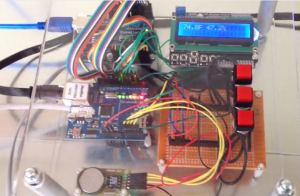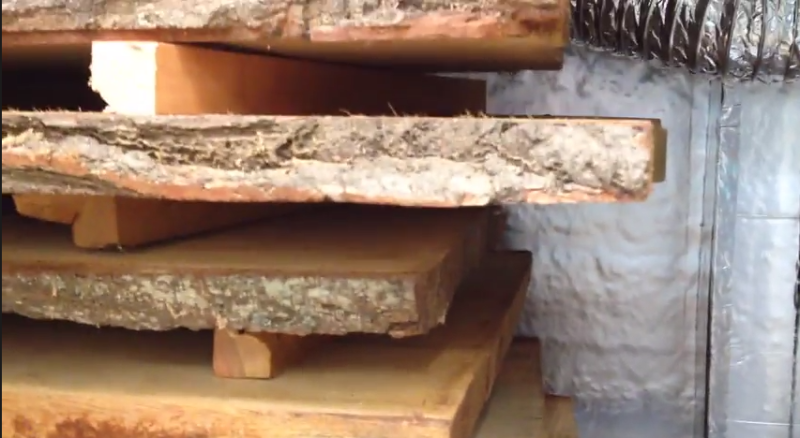Once upon a time, a woodworker met another woodworker who happened to have a tree business. They struck a deal stating that the first woodworker would dry the sawn boards provided by the second and both would share the lumber. That’s exactly what happened to [Tim], which led to his entry in The Hackaday Prize.
[Tim] does a great job explaining his build of the kiln itself, his controls, and the gist of running the thing. The idea is to pull moisture out of the wood at just the right speed. Otherwise, the boards might check on the outside, honeycomb on the inside, or bear residual tension. He’s using a dehumidifier to pump dry air into the kiln and a control system to both monitor the relative humidity in the kiln and to dry the stock down to a moisture content in the 6-8% range.
 The kiln is built from slightly blemished pallet rack shelving that [Tim] cut to suit his needs. He skinned it with 1/2″ insulation boards sealed with aluminium tape and plans to add sheet metal to protect the insulation.
The kiln is built from slightly blemished pallet rack shelving that [Tim] cut to suit his needs. He skinned it with 1/2″ insulation boards sealed with aluminium tape and plans to add sheet metal to protect the insulation.
[Tim] wanted to control both a fan and the dehumidifier, monitor relative humidity in the kiln, log the data, and send it to the internets. For this, he has employed an Arduino Due, a DHT-22, an RTC, a relay board, an Ethernet shield, and an LCD to show what’s happening. The hardware is all working at this point, and the software is on its way. Check out his entry video below.
 This project is an official entry to The Hackaday Prize that sadly didn’t make the quarterfinal selection. It’s still a great project, and worthy of a Hackaday post on its own.
This project is an official entry to The Hackaday Prize that sadly didn’t make the quarterfinal selection. It’s still a great project, and worthy of a Hackaday post on its own.
















I just happened to pull open HaD and saw that this popped up. Ironically, I’ve been working on getting the software workable for a good portion of the day today. The kiln is now tweeting its status; you can catch it at @SuburbanKiln. I’ll be posting the source code as I get further along.
I too am interested in the code when it is available
[quote=Tim White]The kiln is now tweeting its status; you can catch it at @SuburbanKiln.[/quote]
I searched at DuckDuckGo and found nothing . Whats the link?
@SuburbanKiln
silly me -don’t use twitter
Will you release your code?
I thought that you should always remove the bark and cover the end grain with paint or wax because the end grain tends to dry faster than rest of the wood causing cracking.
I’ve heard different things on the bark; I left it on to slightly slow the drying process, but my decision to do so wasn’t necessarily based on past knowledge. I’ve got a LOT of wood to dry, and I’m going to try different techniques as I go. I would imagine it would be a good idea to remove the bark if the board only had bark on one side, and I’ll do that with future wood loads if the situation arises. However, in this case, the boards all have bark on both sides (they’re flat sawn) so I left it on.
As you note, the end grain is sealed, and I’ll continue to do that for all the boards. It’s been interesting to watch though, as I’ve gotten some checking and failure of the boards even with the end sealing.
First, I’ll be posting a project update shortly to describe where I am in the process.
Second, yes, I’ll definitely post my code. I’ll try to set up a git this weekend to get it posted as-is (which, incidentally, is far from finished).
you should look into wood humidity testers.
in the one wood drying Kiln i used at school it measured from 3 different places on a stack of wood similar to yours.
sensor places top middle and bottom,
top and bottom ones being on opposite ends
if im reading it correctly you are only measuring the air humidity as you go not the wood water levels